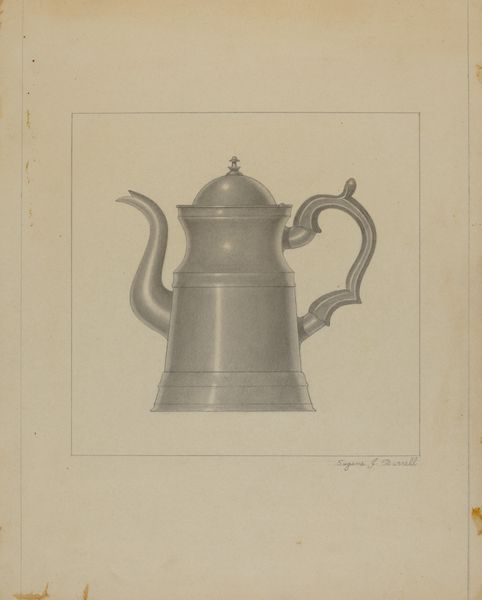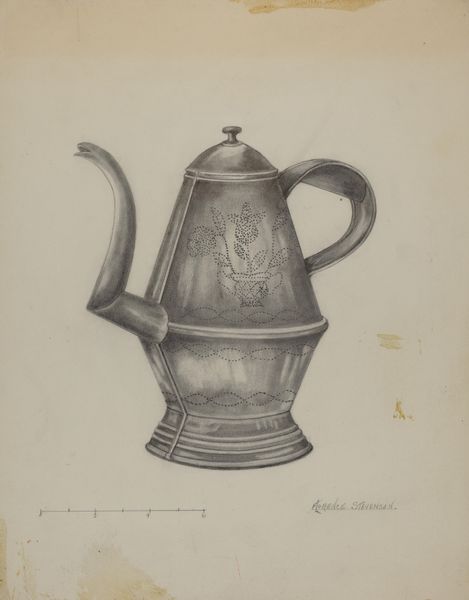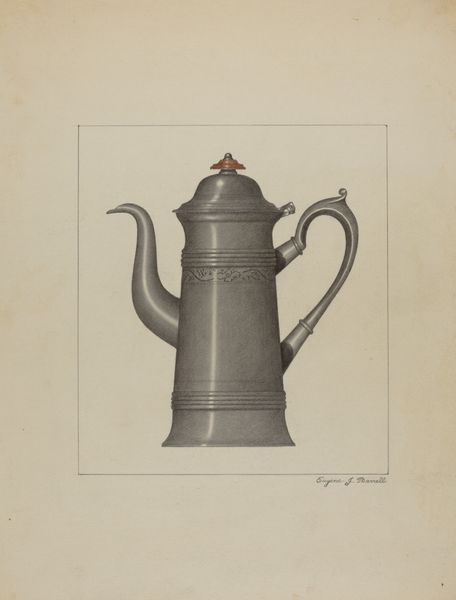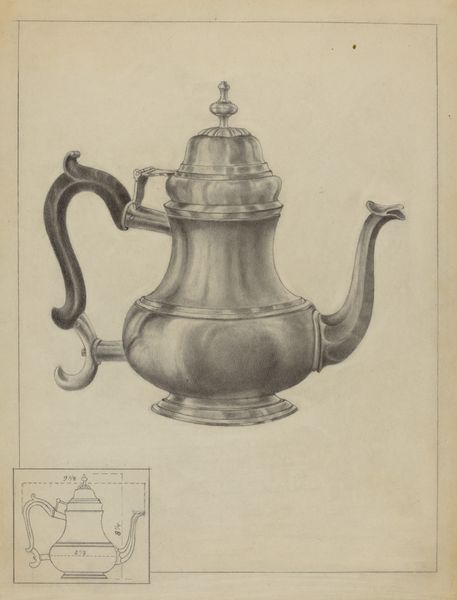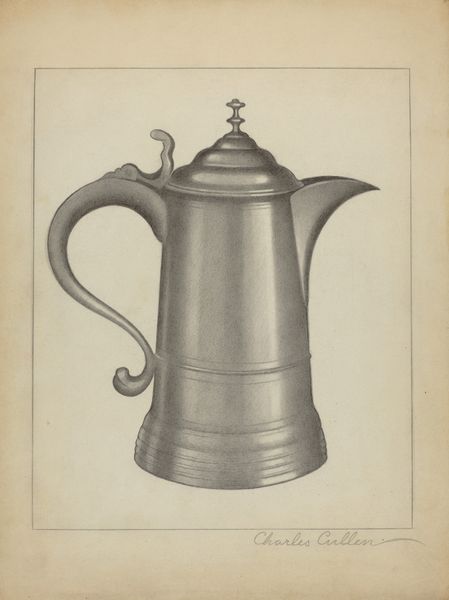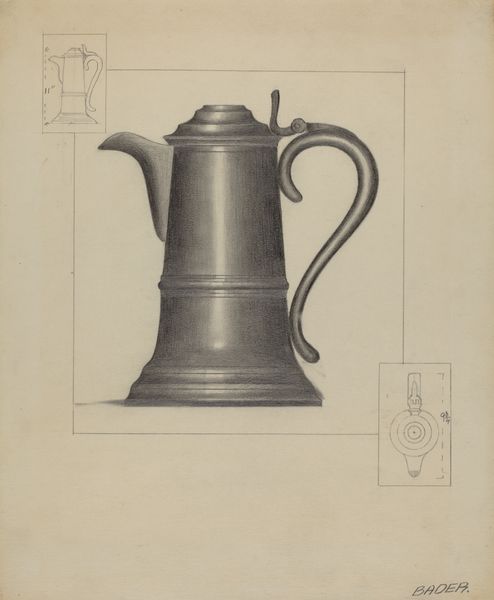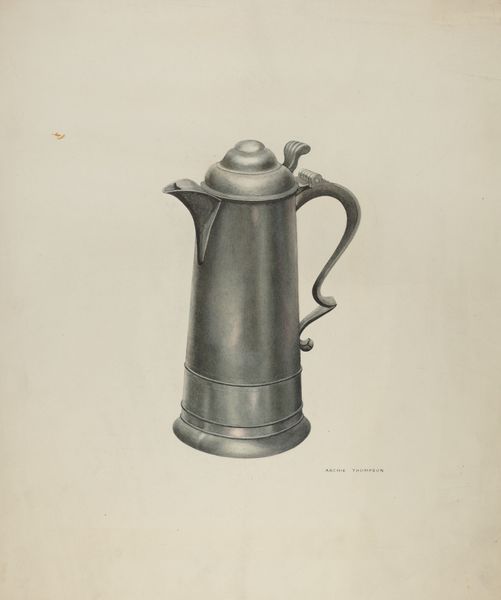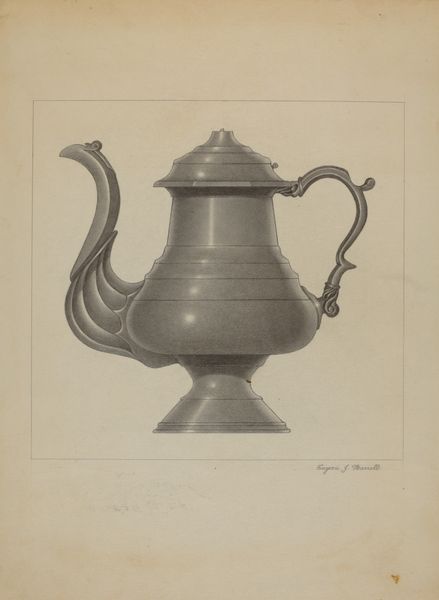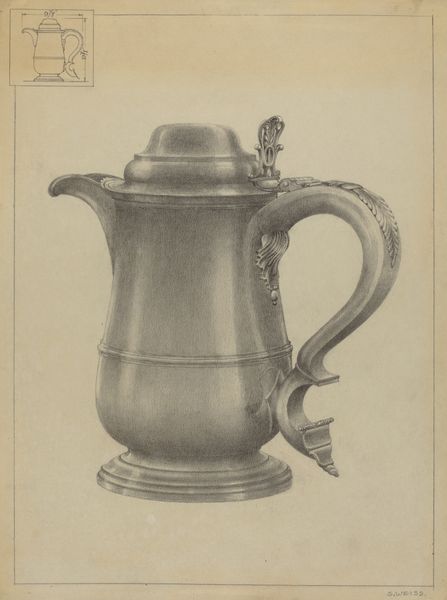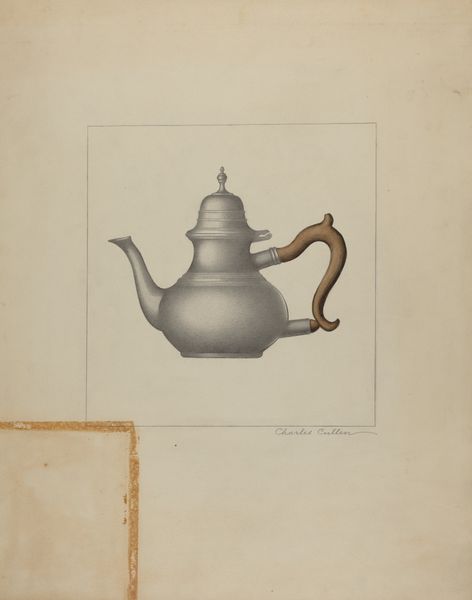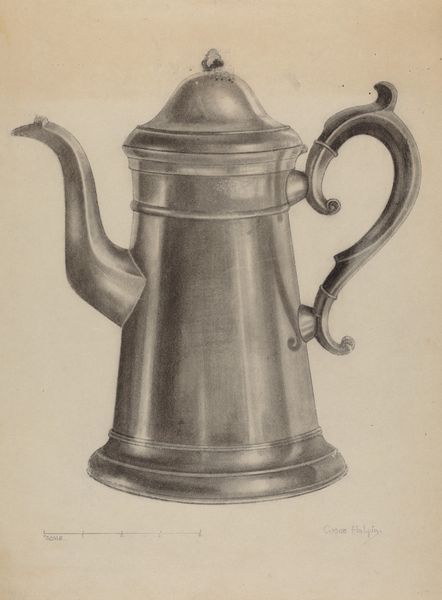
drawing, pencil
#
drawing
#
pencil drawing
#
pencil
#
watercolor
#
realism
Dimensions: overall: 45.5 x 36.8 cm (17 15/16 x 14 1/2 in.)
Copyright: National Gallery of Art: CC0 1.0
Curator: There's something almost melancholic about the realism in this work, don't you think? It has a quiet stillness. Editor: Absolutely. We're looking at "Pewter Flagon," a pencil drawing from sometime between 1935 and 1942, by Eugene Barrell. I am struck by how meticulously rendered the surface of this metal object is. The soft gradient in values across the drawing make the cylindrical form look realistic and touchable. It almost appears staged, under dramatic, focused light. Curator: The choice of a pewter flagon is quite interesting, isn't it? It brings to mind images of early American taverns and domestic life—a world of warmth and communal gatherings around hearths. Even the choice of media--pencil drawing with possible hints of watercolor--feels almost quaint or traditional, especially when viewed from a contemporary lens. But let’s not romanticize; this era, framed by the Depression and the beginnings of war, probably had a far more ambivalent relationship with this sense of cozy domesticity than we’d imagine. Editor: Yes, a flagon represents more than just a container; it’s a vessel holding communal traditions, familial memories and a symbol of sustenance. Its weight is substantial – both physically and symbolically. The very material itself is suggestive. Pewter, unlike gold or silver, doesn’t signal overt wealth, but suggests a more grounded, practical elegance. And notice how Barrell captured its subdued lustre, perhaps indicative of simpler times, far removed from the ostentatious displays of industrialized wealth. Curator: I agree, the object here certainly has ties to simpler, more humble times, however, it does bring to mind questions about function and display during this historical period. One wonders about this object's original purpose, and about Barrell's purpose when creating the work: Is it an exercise in replicating visual accuracy or a broader commentary on how material objects define domestic life and historical context? Editor: Maybe it is about endurance, something stable and familiar to cling to when everything else felt precarious. After all, it’s been around centuries, hasn't it? That same shape, used for generation to generation. Food, drink, family...These simple things transcend political and social changes; perhaps Barrell sought that simple thread through tumultuous eras. Curator: Yes, perhaps it speaks to that idea of continuity, and finding meaning and connection through tangible things. That resonates, particularly in an era marked by great upheaval. Editor: A beautifully considered artwork. Thank you for sharing its layers.
Comments
No comments
Be the first to comment and join the conversation on the ultimate creative platform.

